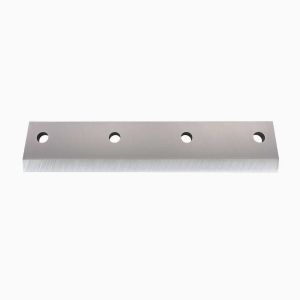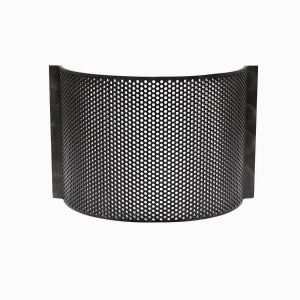How to Troubleshoot Your Granulator Blades

To optimize your granulator production and adequately plan for downtime, understand when your granulator blades are performing as efficiently as possible and when a maintenance action may soon be required. For granulating operations, performing preventative maintenance can save hours of unplanned downtime and increase the safety of the processing environment. However, for many granulators, maintenance is performed just-in-time (JIT), which requires recognizing the early warning signs of a maintenance condition.
"Proper preparation prevents poor performance." - Charlie Batch
Is Your Granulator Working Too Hard?
As granulator blades dull, the granulator requires more electricity to perform. Check amp readings of your granulator just after maintenance is performed and note the values. Then, use this as a baseline to determine when your granulator is working harder than it should.
As granulator blades dull, the machine works harder to process material. Plan to change or sharpen blades when amp readings increase.
Is Your Granulator Too Hot?
Granulators that operate with dull blades lose efficiency and run hotter. As your granulator draws more electricity, the temperature inside the machine increases which can lead to dangerous fire conditions. The vibration and increased operating temperature caused by dull blades also decreases the overall life of the granulator.
"The most dangerous kind of waste is the waste we do not recognize." - Shigeo Shingo
Are Your Particle Sizes Uniform?
When the gap between granulator knives are not properly set, the material tears instead of being cut. As a result, the granulated particles are not the right size and do not drop through the particle screen after being cut.
Granulator knife gaps must be consistent to keep your granulator performing at its best. The best gap size for your machine is determined by the material being cut and machine specifications. When setting the gap, each knife must be the same width to create a uniform pinch point throughout the length of the machine.
Are Your Knives Wearing Too Quickly?
Many conditions can cause granulator knives to wear prematurely.
1. Improper feed rate.
When material floats on top of the rotor, it scrapes against the blade material before it is cut. This causes the blade material to wear prematurely.
Conveyor feeding establishes a consistent feed rate and can prevent overloading the machine. If conveyor feeding is not possible, it is essential to educate operators on the proper feed rate to ensure knife life is maximized.
2.Imperfect blade material selection.
Steel blades provide maximum wear resistance at required toughness levels. The overall life of a steel blade can be increased through the application of a coating such as tungsten carbide. High-volume processors of waste, trim, and material often realize the most significant benefit from coated granulator blades. In some applications, applying a coating increases the life of the blade by 25% to 100%.
3. Dirty and mixed material.
Cutting through mixed or dirty material can have a significant impact on knife life. Labels, varying plastic materials, and other debris dull blades and make it more challenging to optimize your blade material. To mitigate these effects, consider cleaning the material before it enters the granulator. The simple addition of a shaker table in some case can double the life of your knives by shaking of excess dirt and debris from the material. Many high volume recyclers utilize wash lines to help remove labels and separate bottle caps. Implementing a cleaning process can double or quadruple the life of your granulator blades.
While many blade materials can work for your granulating operation, there is one blade material that will deliver the ideal combination of life, cut-quality, and cost. Work with a custom blade expert to understand all of your options, evaluate your granulating process, and find your ideal granulating blade material.





